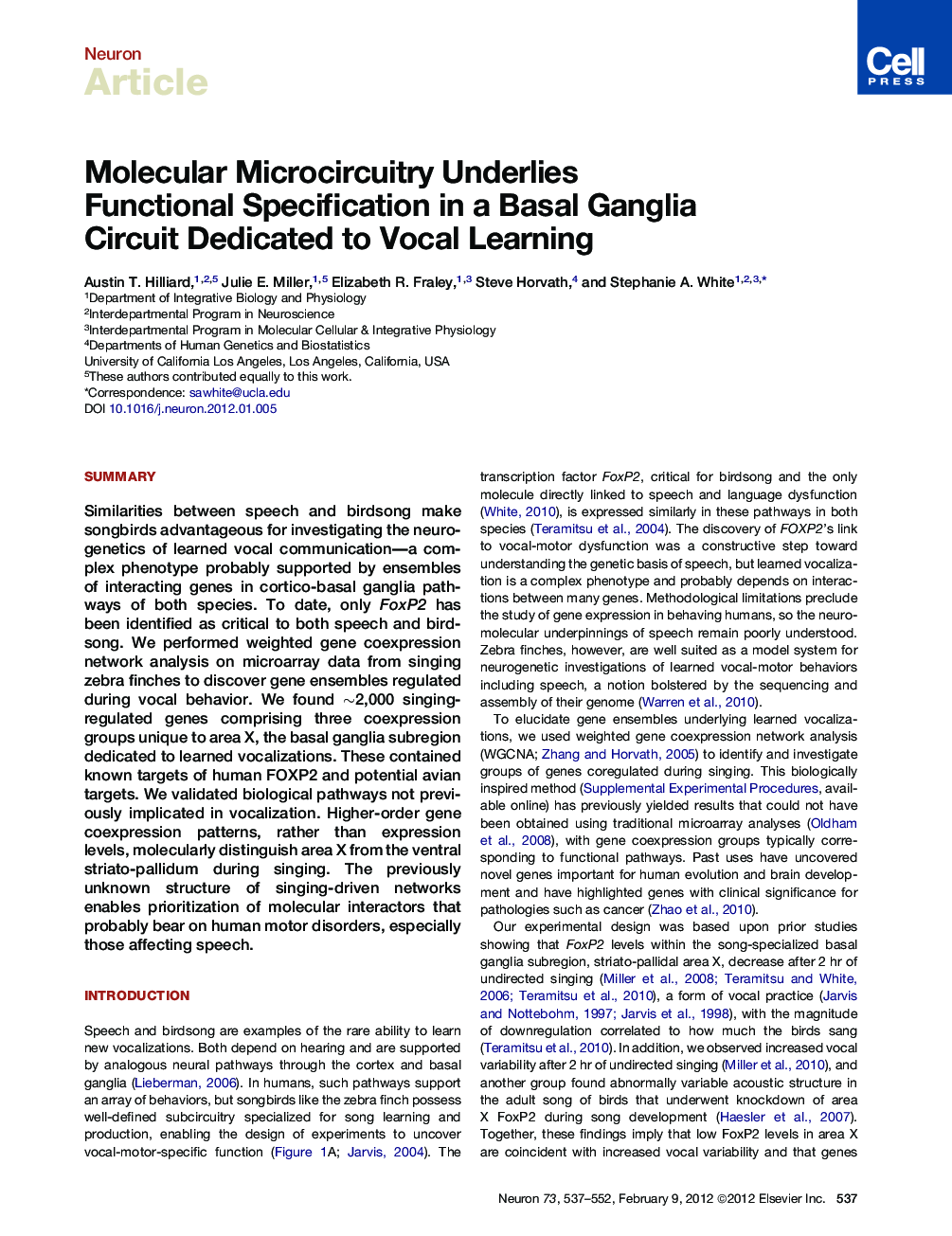| Article ID | Journal | Published Year | Pages | File Type |
|---|---|---|---|---|
| 4321495 | Neuron | 2012 | 16 Pages |
SummarySimilarities between speech and birdsong make songbirds advantageous for investigating the neurogenetics of learned vocal communication—a complex phenotype probably supported by ensembles of interacting genes in cortico-basal ganglia pathways of both species. To date, only FoxP2 has been identified as critical to both speech and birdsong. We performed weighted gene coexpression network analysis on microarray data from singing zebra finches to discover gene ensembles regulated during vocal behavior. We found ∼2,000 singing-regulated genes comprising three coexpression groups unique to area X, the basal ganglia subregion dedicated to learned vocalizations. These contained known targets of human FOXP2 and potential avian targets. We validated biological pathways not previously implicated in vocalization. Higher-order gene coexpression patterns, rather than expression levels, molecularly distinguish area X from the ventral striato-pallidum during singing. The previously unknown structure of singing-driven networks enables prioritization of molecular interactors that probably bear on human motor disorders, especially those affecting speech.
► Singing-driven coexpression modules contain ∼2,000 genes in songbird nucleus area X ► High-order relationships of genes in these modules confer vocal-motor specificity ► Speech-related gene FoxP2 and its transcriptional targets in singing-driven modules ► Biological validation of previously unknown pathways underlying vocal behavior
